PROJECT III
Summary 2
| 3. Geographical Distribution of New Categories |
We examine the geographical distribution of the four newly established categories..
1.Expanded Cities (blue): 29
2.Sustainable/Stable Cities (green): 14
3.Converted Stagnant Cities (pink): 37
4.Contracting Cities (red): 36
5.Exceptions of the four categories (yellow): 2
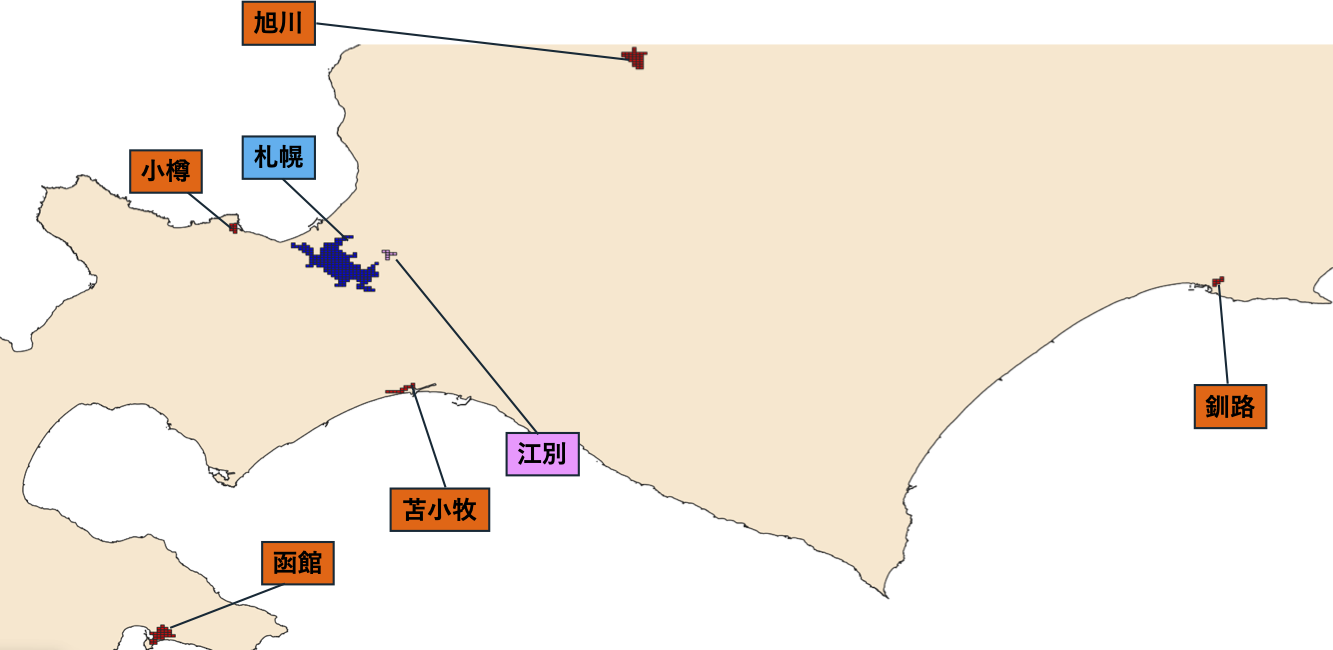
In Hokkaido, only Sapporo札幌 belongs to the Expanded Cities group, Ebetsu江別 is present as Converted Stagnant Cities, and others are in the group of Contracting Cities.
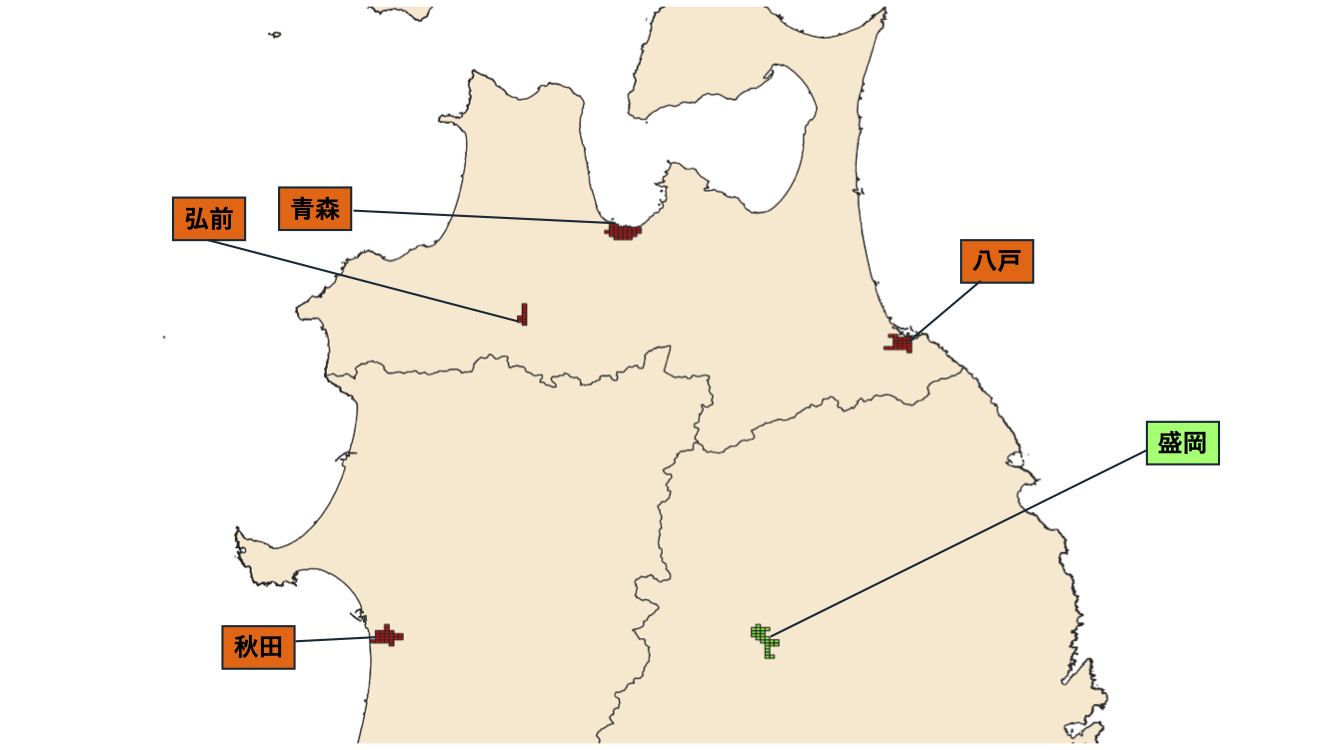
Aomori青森, Hirosaki弘前, Hachinohe八戸, and Akita秋田 are Contracting Cities. Only Morioka盛岡 has maintained its population.
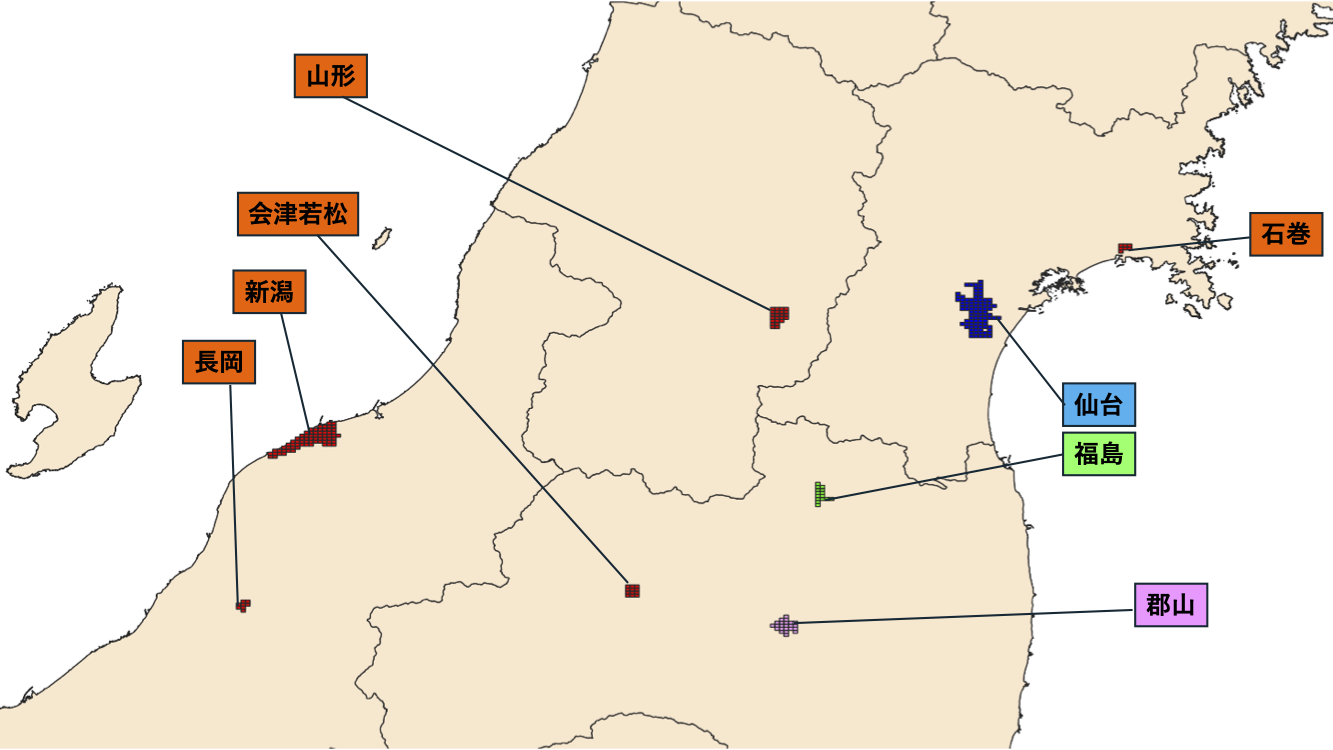
In the Tohoku and Shin-etsu regions, Sendai仙台 belongs to the Expanded Cities
group, and Fukushima福島 has maintained its population; however, Yamagata山形,
Niigata新潟, and Koriyama郡山, the former Sustainable/Stable Cities, have moved
into the group of Contracting Cities along with Aizuwakamatsu会津若松 and Nagaoka長岡.
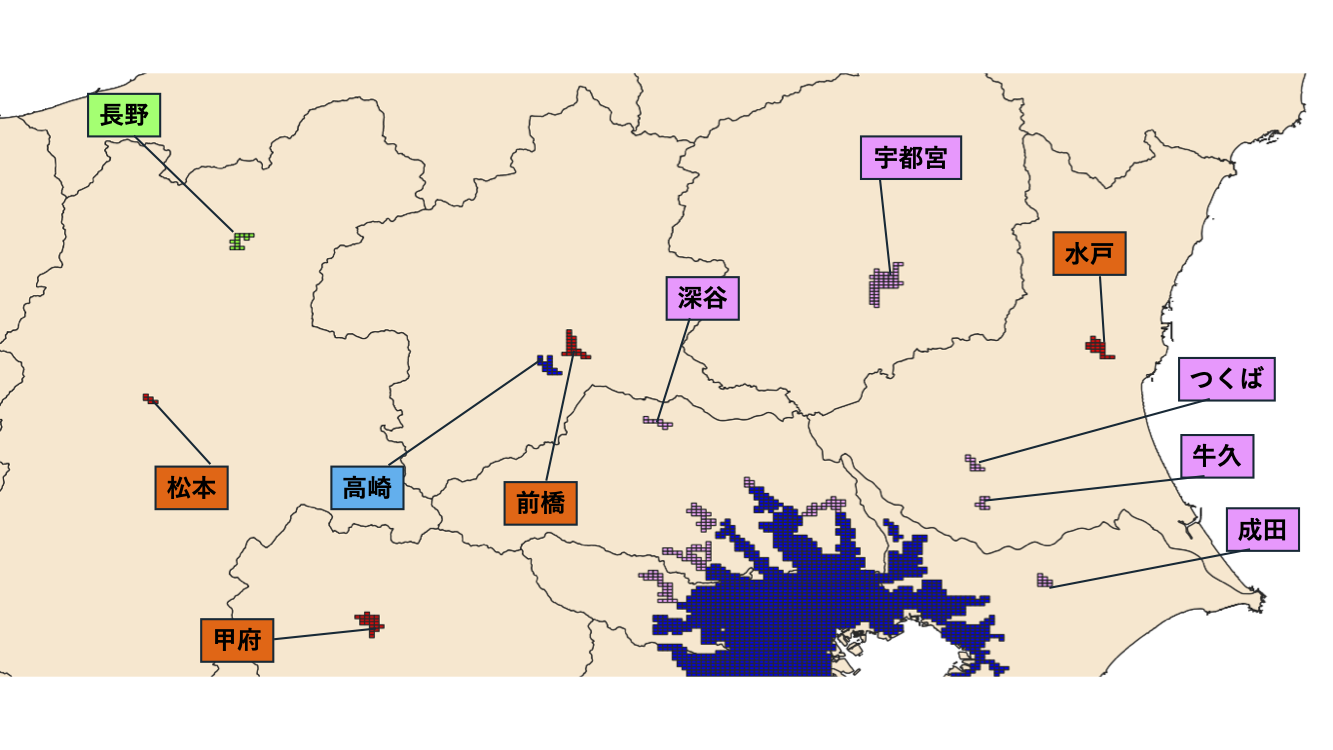 In the Kita-Kanto region, only Takasaki高崎, formerly belonging to the Sustainable/Stable
Cities, has escalated to a class of Expanded Cities. At the same time,
Utsunomiya宇都宮 and Fukaya深谷 of the former Expanded Cities have shrinking
populations. Nagano長野 has maintained its population stably. Matsumoto松本,
Kofu甲府, and Maebashi前橋 have joined the group of Contracting Cities.
In the Kita-Kanto region, only Takasaki高崎, formerly belonging to the Sustainable/Stable
Cities, has escalated to a class of Expanded Cities. At the same time,
Utsunomiya宇都宮 and Fukaya深谷 of the former Expanded Cities have shrinking
populations. Nagano長野 has maintained its population stably. Matsumoto松本,
Kofu甲府, and Maebashi前橋 have joined the group of Contracting Cities.
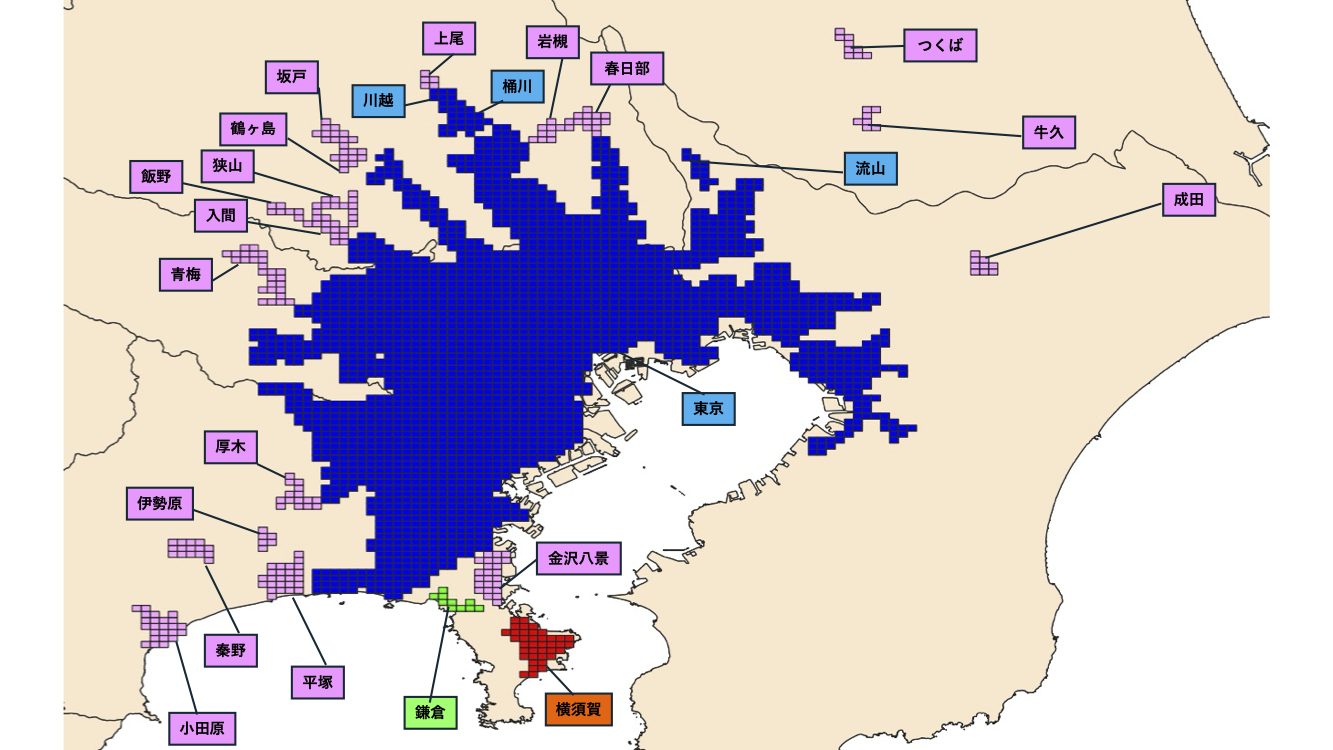 In the Kanto region, while Tokyo東京 has expanded its population, almost
all its surrounding urban areas have shown a decline in their populations.
Only Nagareyama流山, Okegawa桶川, and Kawagoe川越 are still growing. Narita成田,
Ushiku牛久, Tsukubaつくば, Iruma入間, Ome青梅, Atsugi厚木, Hadano秦野, and Hiratsuka平塚
were previously recognized as Expanded Cities but have stagnated their
populations and joined the group of Converted Stagnant Cities. Yokosuka横須賀
has transitioned from Sustainable/Stable Cities to Contracting Cities.
In the Kanto region, while Tokyo東京 has expanded its population, almost
all its surrounding urban areas have shown a decline in their populations.
Only Nagareyama流山, Okegawa桶川, and Kawagoe川越 are still growing. Narita成田,
Ushiku牛久, Tsukubaつくば, Iruma入間, Ome青梅, Atsugi厚木, Hadano秦野, and Hiratsuka平塚
were previously recognized as Expanded Cities but have stagnated their
populations and joined the group of Converted Stagnant Cities. Yokosuka横須賀
has transitioned from Sustainable/Stable Cities to Contracting Cities.
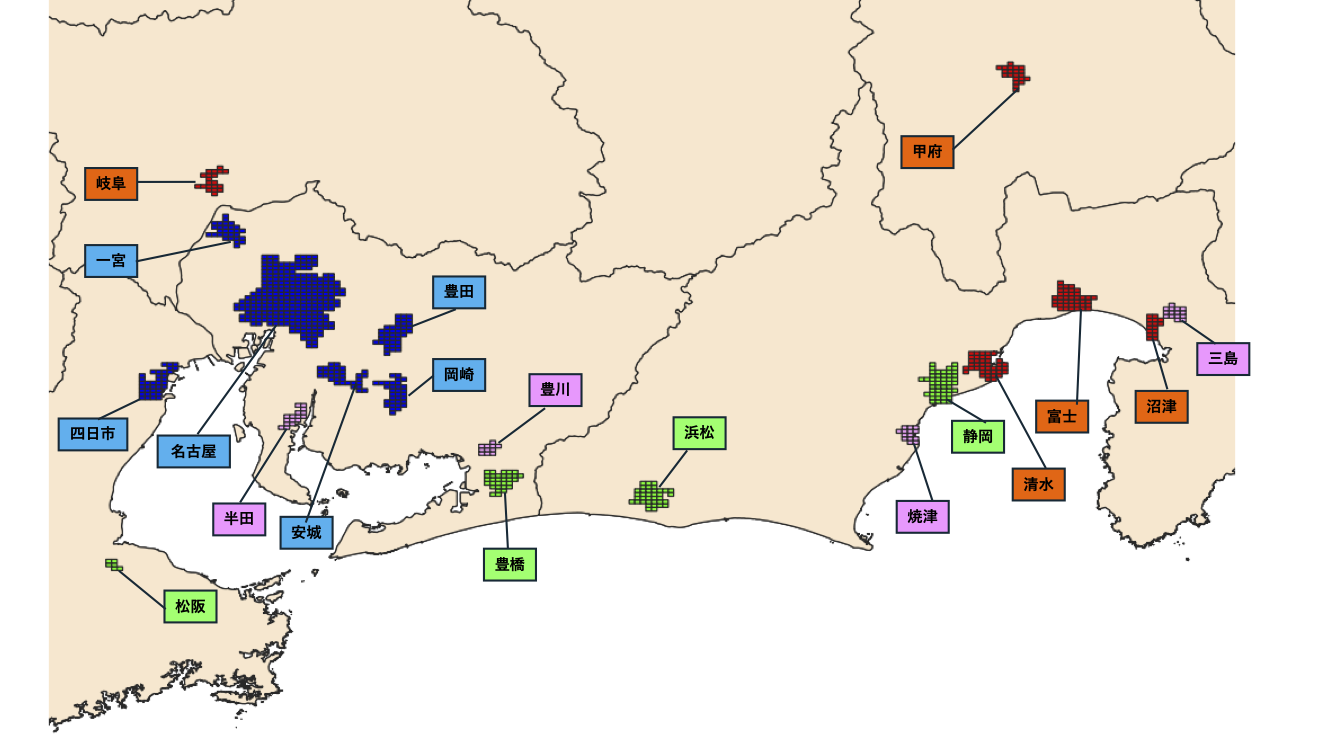 In the Tokai region, the area surrounding Nagoya名古屋 is concentrated in Expanded Cities, despite Handa半田 and Toyokawa豊川 having become Converted Stagnant Cities. Yokkaichi四日市 has flown from the Sustainable/Stable Cities group into the Expanded Cities group. Matsusaka松阪, Toyohashi豊橋, Hamamatsu浜松, and Shizuoka静岡 are Sustainable/Stable Cities; Mishima三島 and Yaizu焼津 have changed their classification from Expanded Cities to Converted Stagnant Cities. Additionally, Fuji富士 has changed to the Contracting City category. Gifu岐阜, Shimizu清水, and Numazu沼津 have remained Contracting Cities.
In the Tokai region, the area surrounding Nagoya名古屋 is concentrated in Expanded Cities, despite Handa半田 and Toyokawa豊川 having become Converted Stagnant Cities. Yokkaichi四日市 has flown from the Sustainable/Stable Cities group into the Expanded Cities group. Matsusaka松阪, Toyohashi豊橋, Hamamatsu浜松, and Shizuoka静岡 are Sustainable/Stable Cities; Mishima三島 and Yaizu焼津 have changed their classification from Expanded Cities to Converted Stagnant Cities. Additionally, Fuji富士 has changed to the Contracting City category. Gifu岐阜, Shimizu清水, and Numazu沼津 have remained Contracting Cities.
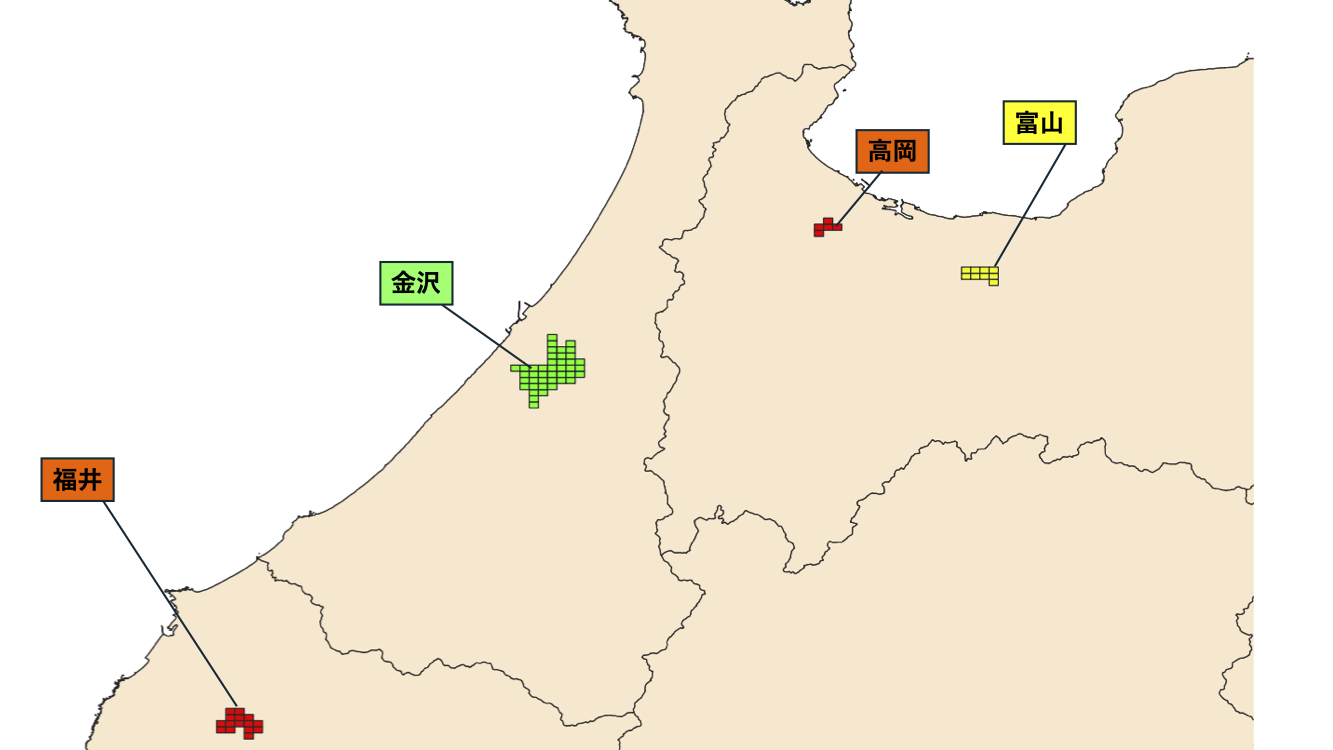
In the Hokuriku region, Fukui福井 and Takaoka高岡 have been categorized as
Contracting Cities, and Kanazawa金沢 as a Sustainable/Stable City. Toyama富山
is one of the two exceptional cities observed in this research, with a
somewhat recovering population and an emerging from the former category
of Contracting Cities.
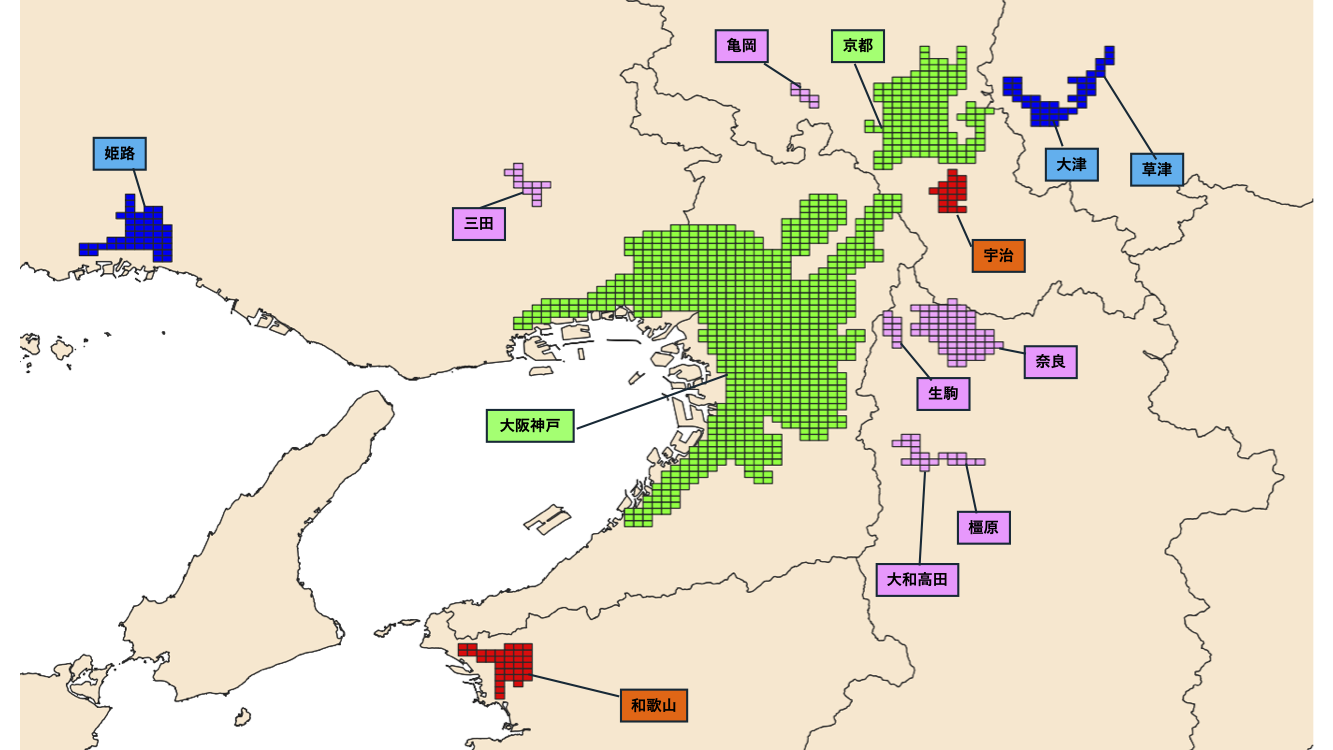 In the Kansai region, the Sustainable/Stable City category comprises Osaka/Kobe大阪・神戸
and Kyoto京都. Kameoka亀岡, Nara奈良, and Ikoma生駒 have held the status of Converted
Stagnant Cities the same as before. Sanda三田, Kashihara橿原, and YamatoTakada大和高田
have moved into the category of Converted Stagnant City category. Uji宇治
became a Contracting City from the Sustainable/Stable City category. Wakayama和歌山
has maintained its character as a Contracting City. Otsu大津 and Kusatsu草津
are part of the group of Expanded Cities.
In the Kansai region, the Sustainable/Stable City category comprises Osaka/Kobe大阪・神戸
and Kyoto京都. Kameoka亀岡, Nara奈良, and Ikoma生駒 have held the status of Converted
Stagnant Cities the same as before. Sanda三田, Kashihara橿原, and YamatoTakada大和高田
have moved into the category of Converted Stagnant City category. Uji宇治
became a Contracting City from the Sustainable/Stable City category. Wakayama和歌山
has maintained its character as a Contracting City. Otsu大津 and Kusatsu草津
are part of the group of Expanded Cities.
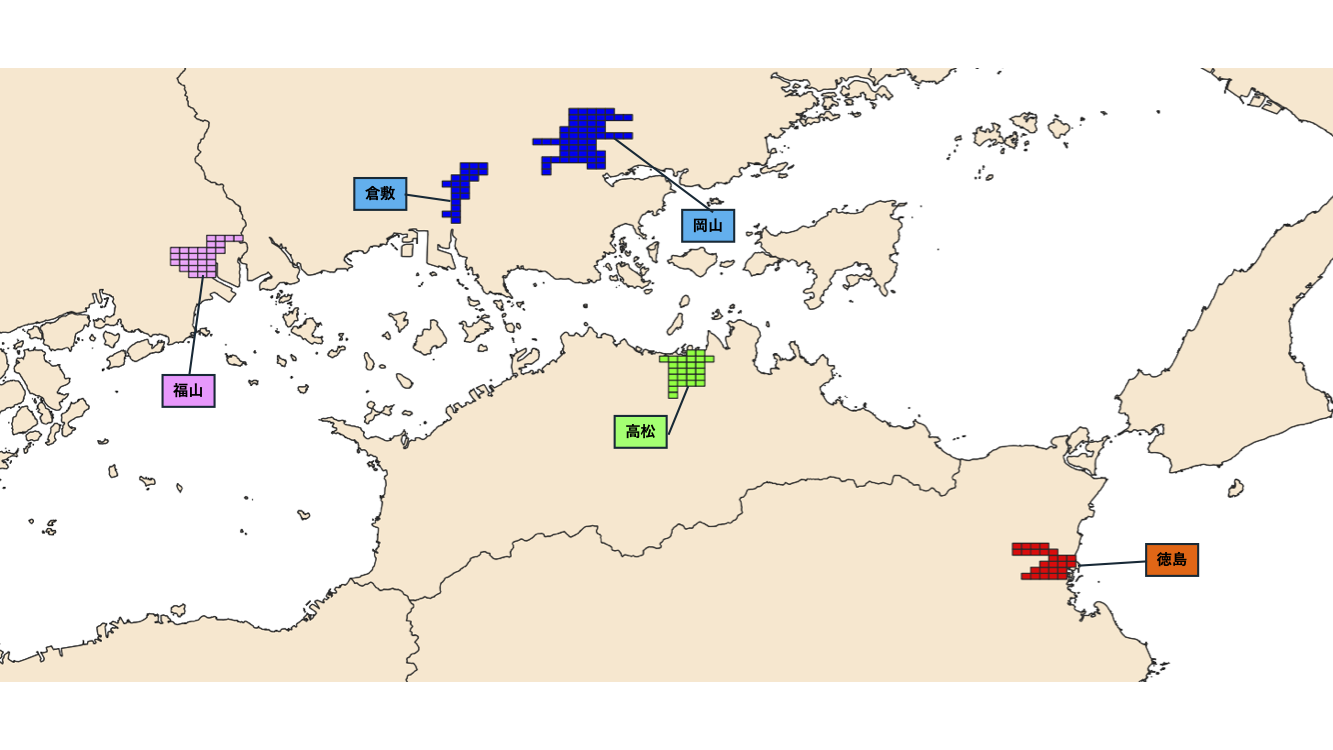
In the eastern part of the Chugoku-Shikoku region, while Okayama岡山 and Kurashiki倉敷 have maintained their expanding tendencies, Fukuyama福山 has fallen into the trend of stagnant population conversion. Takamatsu高松 is still a Sustainable/Stable City.
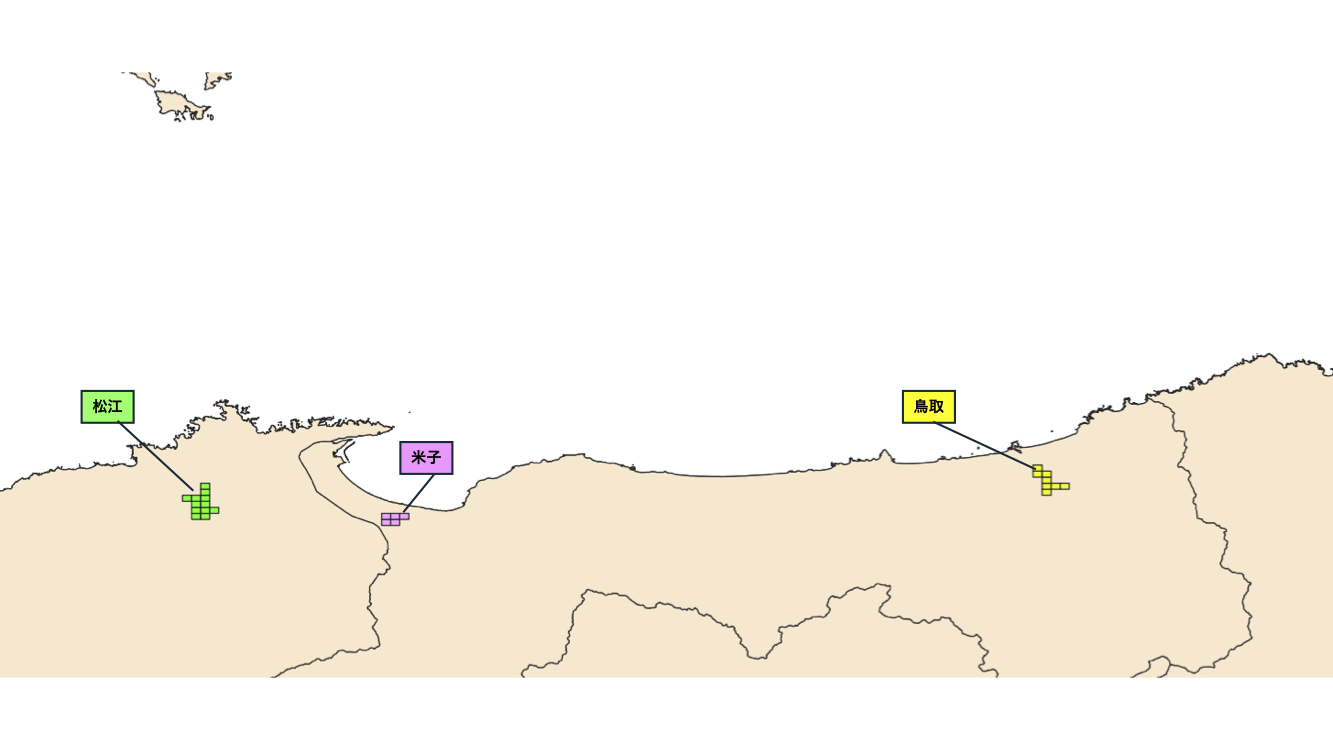 In the northern part of the Chugoku region, Matsue松江 has maintained its
character as a Sustainable/Stable City, but Yonago米子 has become a Converted
Stagnant City. Tottori鳥取 is another of the two exceptional cities with
Toyama observed in this research, showing that its population has stabilized
from the former category of Converted Stagnant Cities.
In the northern part of the Chugoku region, Matsue松江 has maintained its
character as a Sustainable/Stable City, but Yonago米子 has become a Converted
Stagnant City. Tottori鳥取 is another of the two exceptional cities with
Toyama observed in this research, showing that its population has stabilized
from the former category of Converted Stagnant Cities.
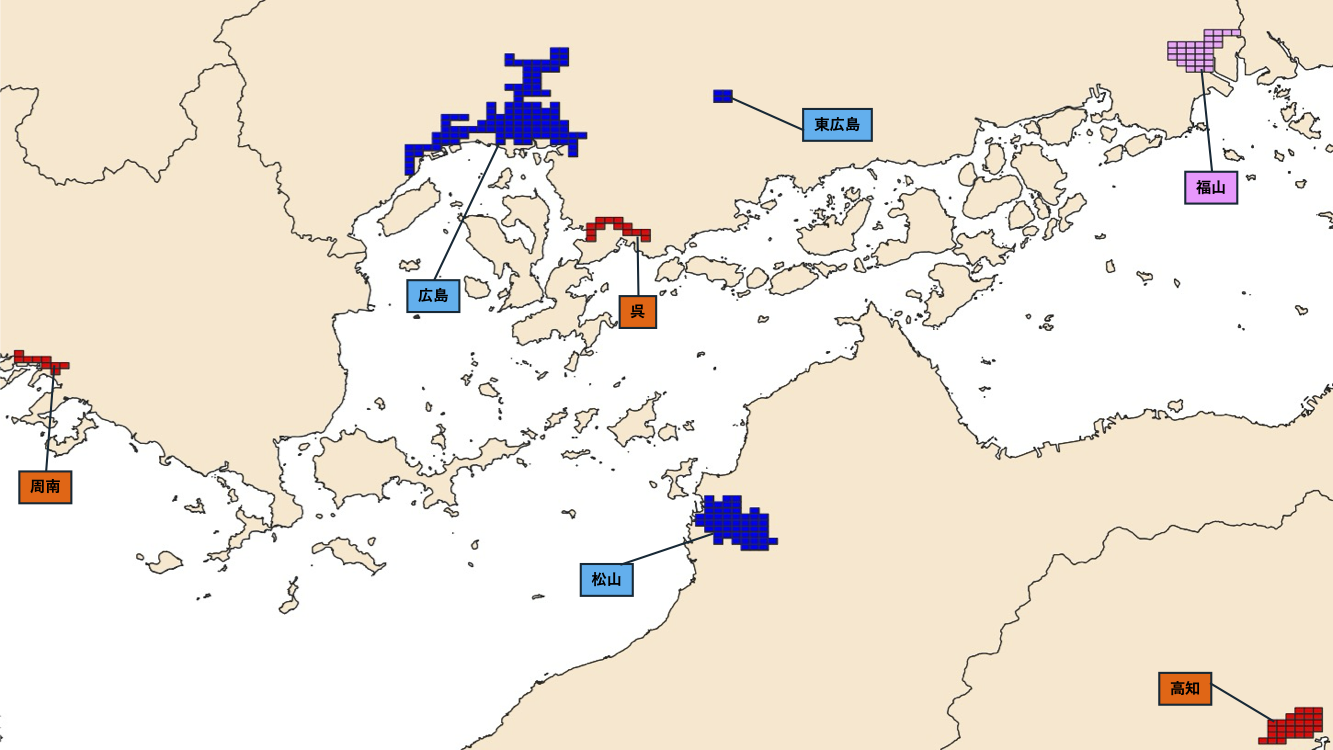
In the western part of the Chugoku region, Hiroshima広島, Higashihiroshima東広島, and Matsuyama松山 have remained in the Expanded Cities category. Meanwhile, some cities have entered the Contracting Cities category: Kure呉 and Kochi高知, the former Sustainable/Stable Cities, and Shunan周南, the former Converted Stagnant Cities.
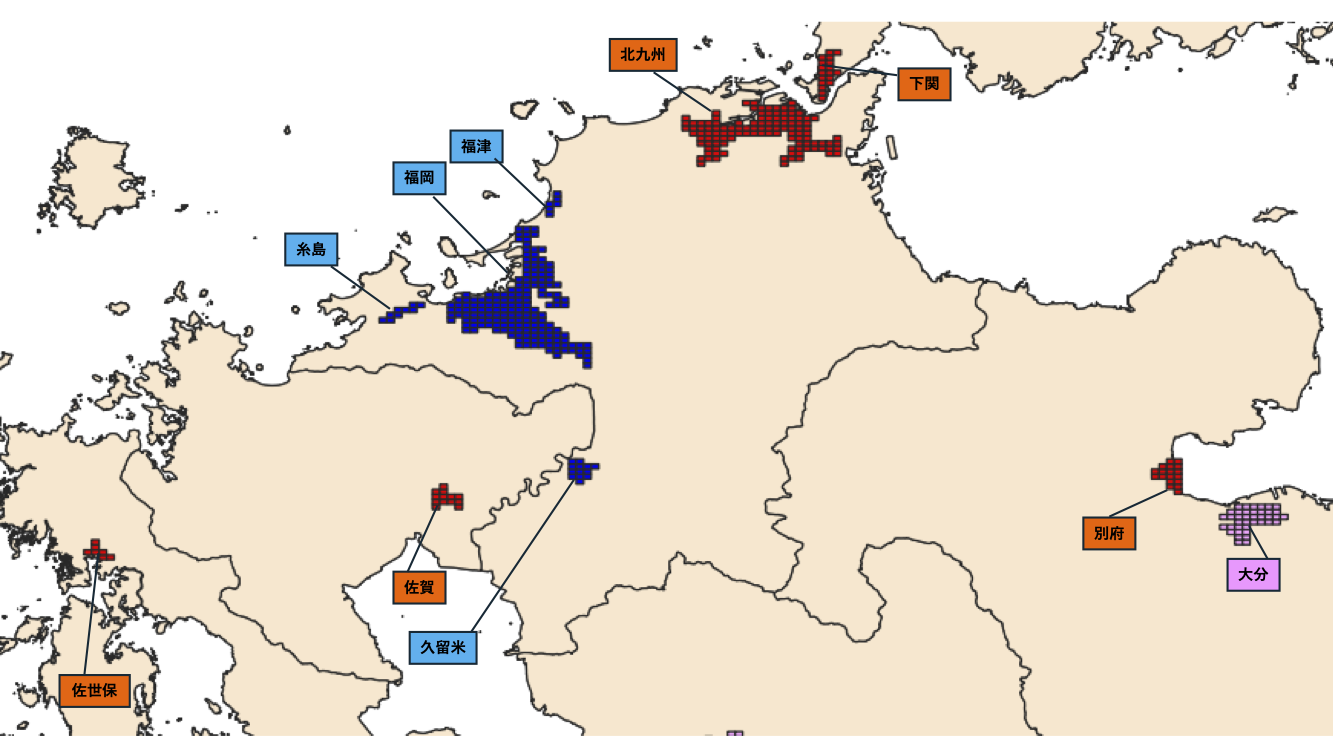 In the northern part of the Kyushu region, Fukuoka福岡 has maintained its
status as an Expanded City. Kurume久留米 has become an Expanded City, transitioning
from the Sustainable/Stable Cities category. Saga佐賀 and Beppu別府 have fallen
into Contracting Cities. Shimonoseki下関, Kitakyushu北九州, and Sasebo佐世保 are
part of the Contracting Cities group, and Oita大分 belongs to the group of
Sustainable/Stable Cities.
In the northern part of the Kyushu region, Fukuoka福岡 has maintained its
status as an Expanded City. Kurume久留米 has become an Expanded City, transitioning
from the Sustainable/Stable Cities category. Saga佐賀 and Beppu別府 have fallen
into Contracting Cities. Shimonoseki下関, Kitakyushu北九州, and Sasebo佐世保 are
part of the Contracting Cities group, and Oita大分 belongs to the group of
Sustainable/Stable Cities.
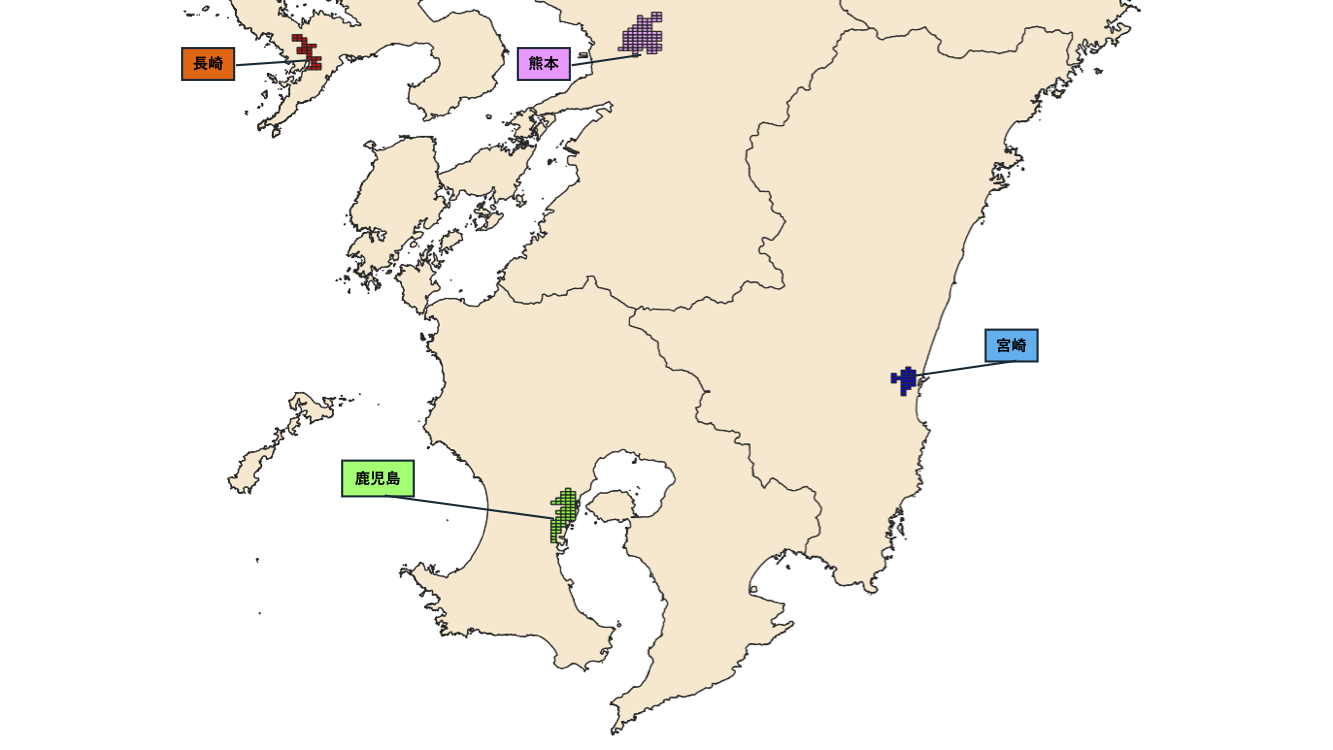 In the southern part of the Kyushu region, while Kumamoto熊本 has slid from
the Expanded Cities category to the Converted Contracting Cities category,
Miyazaki宮崎 has turned its category from Sustainable/Stable Cities to Expanded
Cities. Since our last research, Nagasaki長崎, a Contracting City, and Kagoshima鹿児島,
a Sustainable/Stable City, have maintained their status.
In the southern part of the Kyushu region, while Kumamoto熊本 has slid from
the Expanded Cities category to the Converted Contracting Cities category,
Miyazaki宮崎 has turned its category from Sustainable/Stable Cities to Expanded
Cities. Since our last research, Nagasaki長崎, a Contracting City, and Kagoshima鹿児島,
a Sustainable/Stable City, have maintained their status.
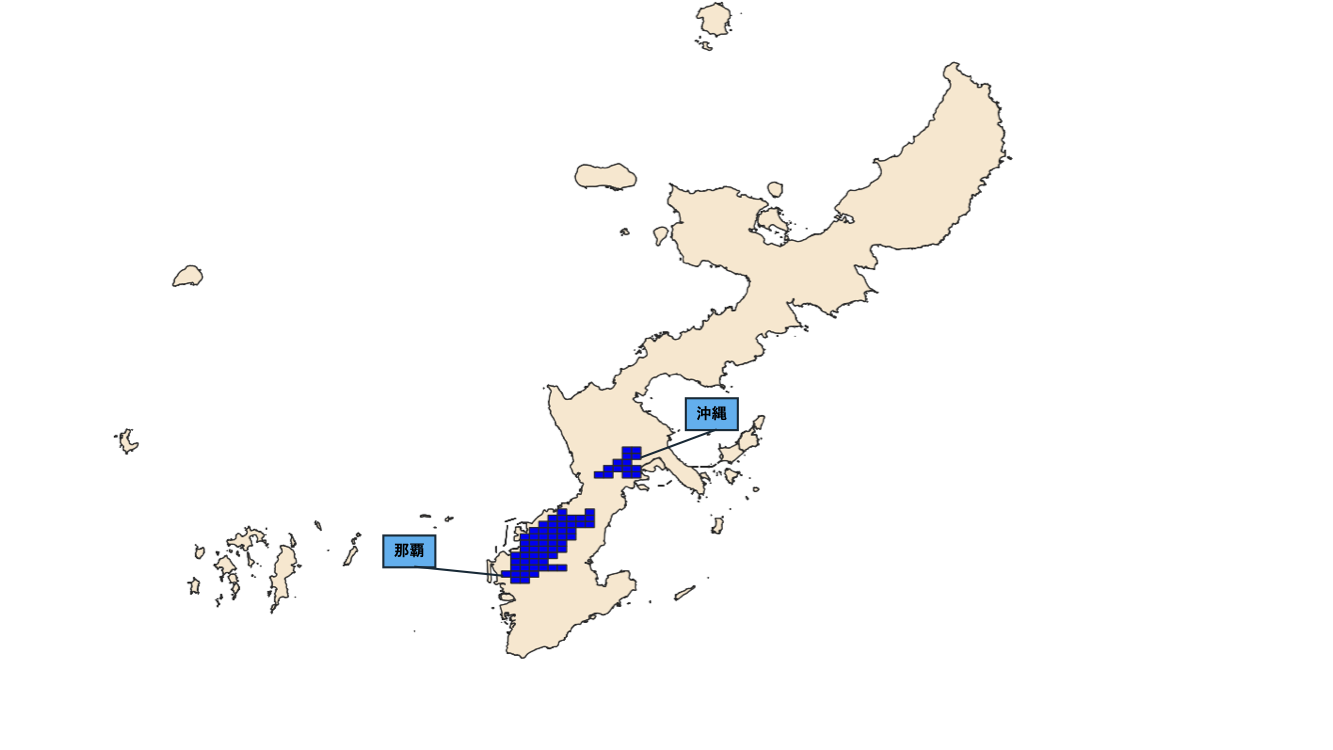
Okinawa沖縄, the former Sustainable/Stable Cities member, has acquired its
new status of Expanded Cities and alongside with Naha那覇.
ConTAct us AT
Prof. Kazushi Tamano
2-11 Wakaba Mihama-ku
Chiba-City, Chiba, Japan 261-8586
(The Open University of Japan)
tamano@k.email.ne.jp